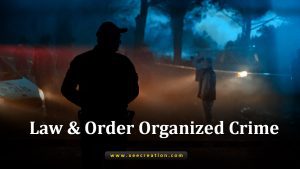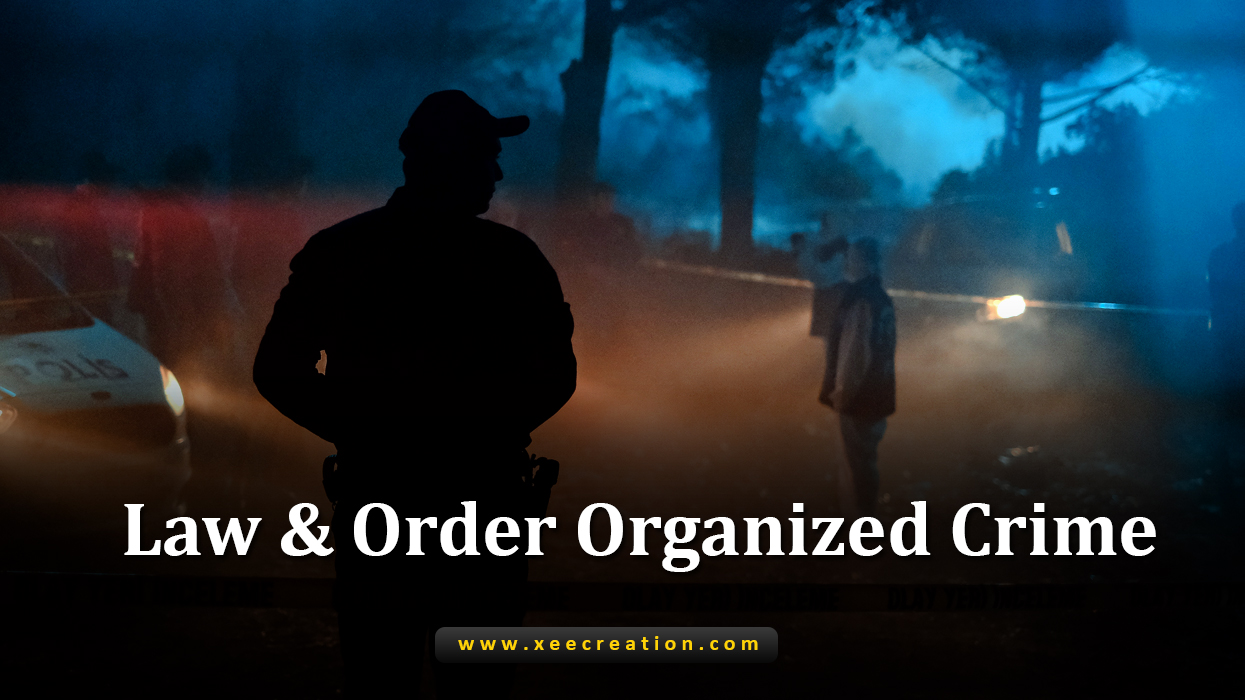Law and Order Organized Crime : 21st The Battle Against Organized Crime: Maintaining Law and Order

Law and Order Organized Crime
Law and Order Organized Crime Introduction:
Organized crime has long been a challenging adversary in maintaining law and order. Operating clandestinely and with remarkable sophistication, these criminal networks pose a significant threat to the fabric of societies worldwide. This article aims to delve into the intricate world of organized crime, shedding light on its inner workings, key players, and the ongoing battle waged by law enforcement agencies to dismantle these illicit networks.
Understanding Organized Crime:
Organized crime refers to a structured and hierarchical criminal enterprise that operates across national boundaries, engaging in a diverse range of illegal activities. These groups exhibit a high degree of coordination, employ intimidation, violence, and corruption tactics, and have extensive networks spanning various societal sectors. The hallmark of organized crime is its ability to adapt and evolve, continuously seeking new avenues for illicit profit.
Key Activities and Criminal Enterprises:
Organized crime groups engage in various activities, each yielding substantial profits. Traditional areas of operation include drug trafficking, human trafficking, arms smuggling, and prostitution rings. However, these groups have diversified their illicit endeavors to include cybercrime, money laundering, extortion, fraud, and intellectual property theft. The ever-growing connectivity of the digital world has provided new opportunities for organized crime syndicates to exploit vulnerabilities and profit from illegal online activities.
Structure and Hierarchical Setup:
Organized crime’s core lies in a well-defined structure that mirrors legitimate business enterprises. Typically, these groups are organized hierarchically, with a transparent chain of command and well-defined roles. The top tier comprises bosses or leaders who make strategic decisions and maintain control. Underneath them are underbosses and consiglieres, who act as advisors and enforcers. At the bottom rung, foot soldiers or associates carry out the day-to-day operations, executing orders from their superiors.
Transnational Nature and Global Reach:
Organized crime operates on a transnational scale, capitalizing on the ease of communication, transportation, and financial transactions across borders. These networks exploit weak governance structures and the need for international coordination to establish a global presence. By exploiting legal loopholes and utilizing corruption, they infiltrate legitimate industries, such as banking, transportation, and entertainment, to facilitate their criminal activities. The international nature of organized crime necessitates collaborative efforts between law enforcement agencies to effectively combat its influence.
Law Enforcement Challenges:
Fighting organized crime is a complex and multifaceted challenge for law enforcement agencies. These criminal organizations employ sophisticated methods to evade detection, such as encrypted communication channels and intricate money laundering schemes. The fear of reprisal and the presence of corruption further hinder investigations and the gathering of evidence. Additionally, these groups’ vast financial resources and network of contacts make them formidable opponents.
Combating Organized Crime:
To combat organized crime effectively, law enforcement agencies employ a multifaceted approach. This involves international cooperation, intelligence sharing, legislative reforms, and establishing specialized task forces. Integrating advanced technology and data analytics has become crucial in identifying patterns, tracking financial transactions, and dismantling these networks. Additionally, community engagement, witness protection programs, and the promotion of trust and transparency are vital to ensure cooperation from the public in bringing criminals to justice.
Conclusion Law and Order Organized Crime:
Organized crime remains an enduring challenge that requires relentless efforts from law enforcement agencies, policymakers, and the global community. The fight against these criminal enterprises demands international cooperation, the deployment of cutting-edge technology, and the implementation of comprehensive legislative measures. By understanding the intricacies of organized crime and addressing its root causes, societies can strive to preserve law and order, safeguarding the well-being of communities worldwide.
FAQs – Organized Crime and Law Enforcement
- What is organized crime? Organized crime refers to a structured and hierarchical criminal enterprise that operates across national boundaries, engaging in various illegal activities. These groups exhibit high coordination, employ tactics of intimidation, violence, and corruption, and have extensive networks that span multiple sectors of society.
- What are some common activities associated with organized crime? Organized crime groups engage in a wide range of illegal activities, including drug trafficking, human trafficking, arms smuggling, prostitution rings, cybercrime, money laundering, extortion, fraud, and intellectual property theft.
- How do organized crime groups operate? Organized crime groups operate with a hierarchical structure similar to legitimate businesses. They have bosses or leaders at the top who make strategic decisions, underbosses and consiglieres who act as advisors and enforcers, and foot soldiers or associates who carry out day-to-day operations. These groups adapt and evolve to exploit new opportunities, often utilizing corruption and infiltrating legitimate industries.
- How does organized crime pose a threat to society? Organized crime undermines the rule of law, disrupts economic stability, and poses a significant threat to public safety. These criminal networks engage in violence, corruption, and intimidation, impacting communities and instilling fear. Additionally, their activities generate massive profits, which are often used to fund further criminal endeavors and perpetuate the cycle of crime.
- How do law enforcement agencies combat organized crime? Law enforcement agencies combat organized crime through international cooperation, intelligence sharing, legislative reforms, and the establishment of specialized task forces. They employ advanced technology and data analytics to identify patterns, track financial transactions, and dismantle these networks. Community engagement, witness protection programs, and promoting trust and transparency are also crucial in gathering information and securing cooperation from the public.
- What are the challenges faced by law enforcement in combating organized crime? Law enforcement faces numerous challenges when combating organized crime. These include the sophisticated methods employed by criminal networks to evade detection, such as encrypted communication channels and intricate money laundering schemes. The presence of corruption within law enforcement agencies or other sectors can hinder investigations, while the fear of reprisal deters witnesses from coming forward. The transnational nature of organized crime requires international cooperation, which can be complicated by varying legal systems and lack of coordination.
- What can individuals do to help in the fight against organized crime? Individuals can play a crucial role in combating organized crime by being vigilant and reporting any suspicious activities to law enforcement agencies. Cooperation with authorities, providing information, and acting as witnesses when necessary can aid in the investigation and prosecution of organized crime. Additionally, supporting community programs and initiatives that promote education, awareness, and prevention can contribute to the overall fight against organized crime.
- Is organized crime a global issue? Yes, organized crime is a global issue. These criminal networks operate across national boundaries, taking advantage of weak governance structures and the lack of international coordination. The interconnectedness of the modern world, including ease of communication, transportation, and financial transactions, allows organized crime groups to establish a global presence and exploit opportunities in different countries.
- Are there any successful examples of combating organized crime? There have been numerous successful examples of combating organized crime. These include large-scale investigations that have dismantled criminal networks, significant seizures of illegal assets, successful prosecutions, and the implementation of legislative reforms to target organized crime activities. However, the fight against organized crime is an ongoing battle, requiring sustained efforts and adaptability from law enforcement agencies and the collaboration of international partners.
- What is the role of the public in fighting organized crime? The public plays a crucial role in fighting organized crime by being vigilant, reporting suspicious activities, and cooperating with law enforcement agencies. It is essential to support community programs, educate oneself and others about the risks.
Law and Order Organized Crime


1 thought on “Law and Order Organized Crime : 21st The Battle Against Organized Crime: Maintaining Law and Order”